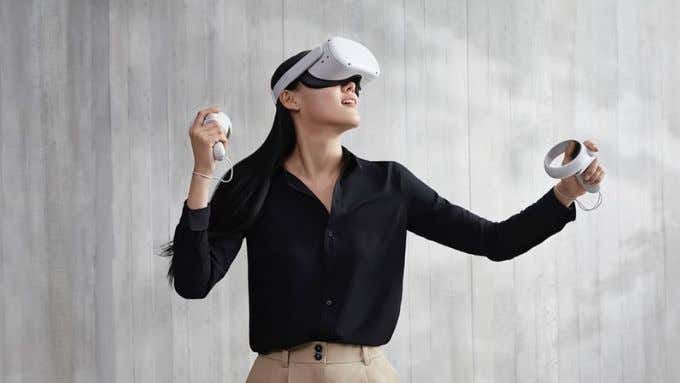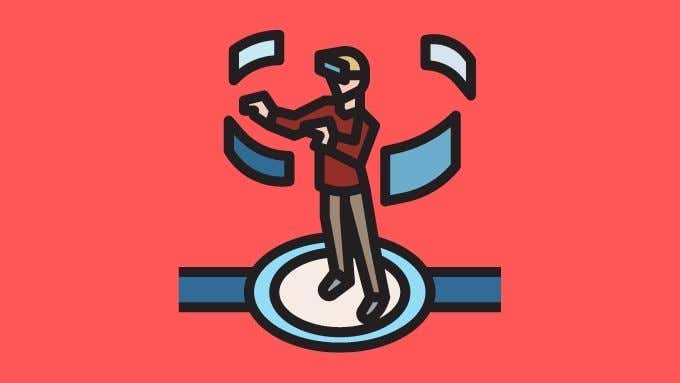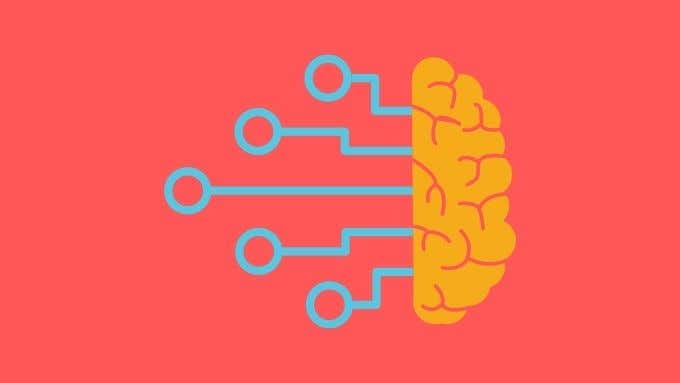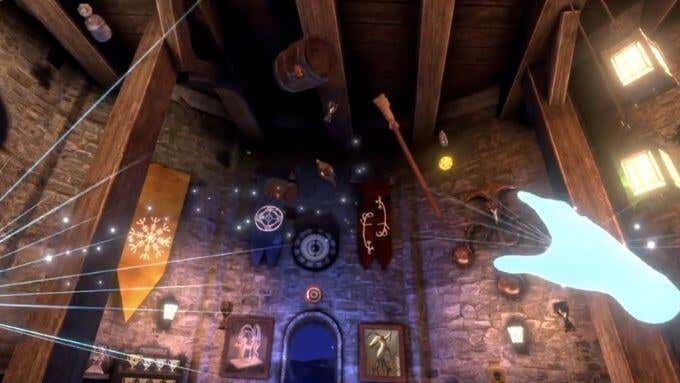Hand tracking hasn’t made quite the splash Oculus Link did, but it’s still an amazing feature with lots of potential. With hand-tracking you don’t need controllers at all. Your own hands are digitized into the VR world! If you have a Quest or are thinking of buying one, it’s worth knowing how hand tracking works and what it can bring to the VR experience.
How Quest Tracks the World
The Oculus Quest uses an innovative approach towards motion tracking that’s commonly referred to as “inside-out” tracking, which is very different from how motion tracking worked in the past. When the first next-generation headsets were released in the mid-2010s, they made use of one or more external tracking cameras. Special motion tracking lights on the headset told the camera exactly where the headset was in relation to it. With some clever math, that data could then be converted to very accurate motion tracking in 3D space. This is how premium VR headsets offer “six degrees of freedom”, also known as 6DoF. Quest moves the camera sensor onto the headset itself, in this case placing them in strategic spots on the device. Other headsets may use even more cameras to improve accuracy. These four cameras let the Quest look at the real world around you and determine what your position is within that space. That’s what allows the Quest to be self-contained and portable. It’s also the feature that allows for hand-tracking with the Oculus to be possible in the first place..
The Standard Oculus Touch Controllers
To understand what makes Oculus hand tracking so impressive, we have to start with the rather mundane physical controllers that come with the Oculus Quest. Each one is fully motion-tracked by internal sensors and special motion tracking markers that tell the Quest’s onboard cameras where the controllers are relative to the headset. When you’re holding the touch controllers in VR, they’re tracked with uncanny accuracy. Using the grip and trigger buttons on the controller, VR software can create a convincing experience of grabbing and manipulating items. This is used to great effect in games such as Half-Life Alyx and The Climb, where gripping items in the VR world is a central part of gameplay. The Touch Controllers also offer haptic feedback thanks to devices called “linear actuators”, which can create physical feelings of bumping into things, vibration and other touch sensations. Thumbsticks and buttons also offer a familiar way to move around a VR space when you can’t physically move about in your real space. The main disadvantage of this compared to hand-tracking is that you have hooks for hands. You can perform simple pinching movements with your virtual hands, but that’s the extent of it. It doesn’t feel like a major limitation when games are designed around the controllers, but hand tracking opens a spectrum of new possibilities in VR.
What Oculus Hand-Tracking Does
When hand tracking is enabled, you’ll see an accurate representation of your real hands within the VR world. Each movement of your fingers or wrist will be reflected in their virtual doppelgangers. Hand Tracking is no longer a beta feature of Quest. It’s now integrated into the operating system and many first party Quest applications. The first major benefit here is that if you just quickly want to put on your Quest and watch a movie in VR or browse around the app store, you don’t have to go through the effort of strapping on the touch controllers. Using just your hands, you can access system menus and navigate around with ease. Now that hand-tracking is an official feature of Quest, third-party app developers can add it to their apps. There are already a number of apps that make excellent use of the Oculus hand-tracking feature, but we’re sure developers will find many more exciting ways in which direct hand-tracking can transform the VR experience
How Oculus Hand-tracking Works
The results of hand-tracking are pretty amazing, but how does it actually work? Obviously Oculus isn’t going to publish the exact details of their proprietary solution, but we do know the technologies and principles involved. First, the on-board cameras are essential to making hand-tracking work. Not only do they provide stereoscopic depth information, but also visual data for processing by machine vision. What’s machine vision? It’s a branch of artificial intelligence, specifically a field known as machine learning. It’s the same technology that lets your phone’s camera app quickly identify faces in a photo. Essentially, the software has to learn what in the image data provided by the camera is a hand and what isn’t a hand. This was probably done by showing the software thousands and thousands of hands in different environments until it could reliably figure out a fast and effective way of telling them apart from everything else in your room. Once the software can create accurate, real-time virtual models of your hands, app developers can use them for anything they can think of. You can now precisely manipulate objects in VR!
Hand-tracked Experiences Worth Trying
If you own an Oculus Quest you can try out the Oculus hand-tracking feature without having to buy any particular app. As mentioned above, it works in the main Quest environment as well as a few first-party apps. When it comes to 3rd-party experiences, there are a few worth highlighting. The Line is a $4.99 narrative experience that also serves as a perfect tech-demo for hand tracking. It tells the tale of a scale model town that runs on clockwork and tracks. Our hero Pedro is in love with Rosa, but he can’t escape his fate. Until something new happens one day. You interact with their scale model world by using your hand to turn knobs, pull levers and fiddle with everything that you can. It’s a linear, short experience, but can show off hand-tracking in a very entertaining way in about 15 minutes. Waltz of the Wizard ($9.99) is another excellent showcase of the technology. You can use your hands to cast spells and interact with just about everything in the VR world around you. If you’ve ever wanted to live out the fantasy of being a wizard who can shoot bolts of lighting from their hands, this is the game for you! What do you think of hand tracking on Quest? Have you tried it? Which games would you recommend? Share your insights in the comments.






